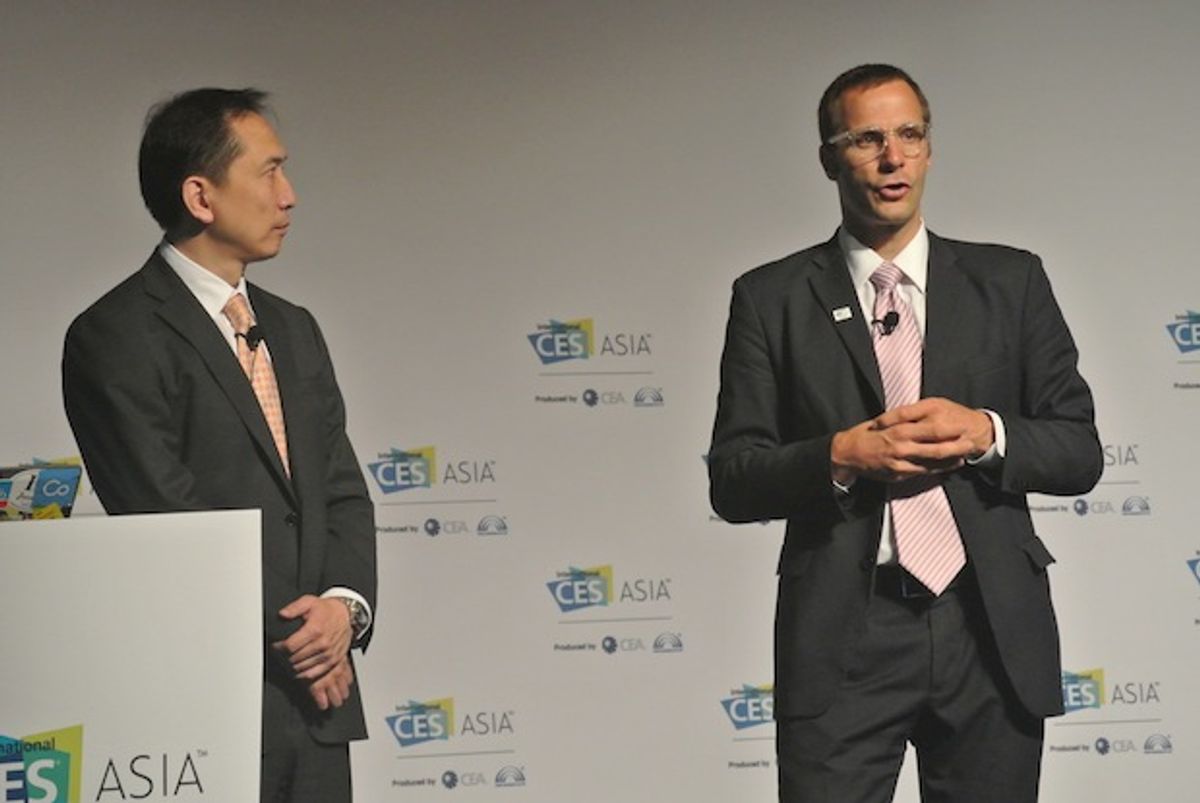We take it as a matter of course that China will continue cranking out much of the world’s consumer electronics. But because these products were often not geared to Chinese citizens, their tastes were mostly overlooked. But domestic demand has been rising dramatically in recent years. And the sheer size of the Chinese retail market is changing the game.
Tomorrow, I’ll have a report about the results of some recent data obtained by the Consumer Electronics Association about how individual Chinese people in different cities make decisions about product purchases. But today I’m looking at the macro drivers of China’s consumer tech market, with some highlights from a presentation from Alfred Zhou of market research firm GFK.
The biggest driver has been the continued surge in China’s middle class. Zhou showed a projection indicating that by 2030, 66 percent of the world’s middle class will live in Asia (with Europe accounting for 14 percent, and the United States and Canada just 7 percent).
In earlier years, it might have been enough for Chinese consumers to get just a basic product—that first TV or cellphone. But now China is experiencing market maturation and saturation for the first time. Consequently, the mid-to-high-end market is where much of the growth is occurring. And an increasing portion of the profit in China’s consumer tech is found not in selling products, but in offering services that accompany those items (think streaming TV rather than the TV itself). Niche products also offer opportunities for growth in otherwise mature product categories—for example, notebooks optimized for gaming have captured 10 percent of the Chinese PC market in the past two years.
A similar dynamic is driving the adoption of various technology upgrades as well. Zhou points out, for example, that it took 20 years to fully roll out 2G cellular service, in China, then five more years for 3G. By contrast, 4G should reach 80 percent penetration in just two years.
An important wrinkle to consider when thinking about how China’s market is evolving is the different “tiers” represented by the nation’s cities. There are no formal definitions, but generally speaking, there are just four or five cities considered to be tier-one mega metropolises. Among these are Beijing and Shanghai. There are dozens of tier-two cities, and many hundreds of tier-three, -four or -five cities. But bear in mind a tier-three city can easily have a population of more than a million people. The aggregated wants and needs of these lower tier cities are going to be much bigger drivers of what products and services will succeed in China than what’s going on in the high-profile tier one megacities.
Stephen Cass is the special projects editor at IEEE Spectrum. He currently helms Spectrum's Hands On column, and is also responsible for interactive projects such as the Top Programming Languages app. He has a bachelor's degree in experimental physics from Trinity College Dublin.



